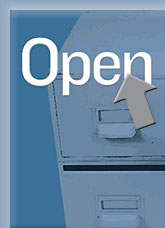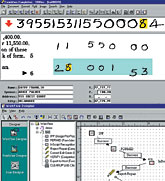Tools for the paperless agency

Agencies have made significant strides toward electronic processes such as contracting, citizen transactions and document storage but, like other organizations, they still put plenty of ink on paper.


Captiva Software's FormWare, above, lets users correct errors on scanned douments and create functions such as event-driven routing of documents and error handling. Its price starts at $10,000 per server, $150,000 for an enterprise system.
Five-year-old law
Here's a rundown of an integrated document management system's basic features:
Document imaging. The imaging components use computers, scanners, digital cameras and printers to convert paper, fax, microfilm, slides, X-rays or computer-aided design documents into electronic formats. Users can then index them according to their own criteria. Virtually all imaging systems support Web browsers and provide advanced image viewing'zoom, rotate, thumbnail'annotation, markup and support for multiple workstations.
OCR/ICR. Optical character recognition and intelligent character recognition are specialized types of imaging software used to automate the process of transforming text-based documents into a readable electronic format.
Workflow. Workflow software's main task is to move electronic documents quickly and automatically along assigned routing paths within an organization. Minimum features generally include route planning, parallel routing to several people simultaneously, rules-based routing that governs where documents go, document tracking and monitoring.
COLD. Integrated programs with computer output to laser disk components provide the ability to move terabytes of data into long-term storage by writing documents onto CD-ROM disks. Documents can be automatically indexed according to ASCII'for text'or image formats. COLD software also supports optical jukeboxes or other high-end storage repositories.
Databases. Object-oriented databases'typically third-party products such as Microsoft SQL Server, Oracle or Microsoft Access'serve as data repositories from which users can quickly retrieve desired documents.
J.B. Miles of Pahoa, Hawaii, writes about communications and computers. E-mail him at jbmiles@gte.net. Three groups are working to develop standards to enable the interoperability of workflow and image management software so users can build a best-of-breed approach that isn't limited to the products of a single vendor.
The Workflow Management Coalition and the Object Management Group have created specifications for interoperability between between systems. The groups' Workflow Reference Model identifies different components of a workflow system, along with the architecture and required interfaces between workflow clients and applications. The Workflow Management Coalition also is developing an XML specification to help workflow products make better use of the Internet.
Meanwhile, the Association for Information and Image Management International is developing a new set of standards for color imaging and improved methods for converting documents to images.
Check these organizations' Web sites, at www.wfmc.org, www.omg.org and www.aiim.org, for updated information about recent developments in standards.
NEXT STORY: INCOMING





